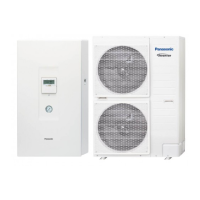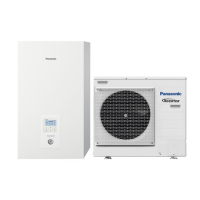Why does my Panasonic WH-UD07JE5 outdoor unit emit water or steam?
- AAndrew ArmstrongSep 2, 2025
The water or steam emitted from the outdoor unit of your Panasonic Heat Pump is due to condensation or evaporation occurring in the pipes.

Why does my Panasonic WH-UD07JE5 outdoor unit emit water or steam?
The water or steam emitted from the outdoor unit of your Panasonic Heat Pump is due to condensation or evaporation occurring in the pipes.
Why does the backup heater turn on automatically on my Panasonic WH-UD07JE5 Heat Pump?
If the backup heater in your Panasonic Heat Pump turns on automatically when disabled, it is due to the protection control of the indoor unit heat exchanger.
Why is there a delay when restarting my Panasonic WH-UD07JE5?
A delayed start after restarting your Panasonic Heat Pump is a protection mechanism for the compressor.
Why does my Panasonic Water Heater system not heat up instantly?
The system will take some time to heat up the water if it starts to operate at cold water temperature.
What to do if the Panasonic Water Heater is not working efficiently in HEAT/COOL mode?
To improve efficiency, ensure the temperature is set correctly, close the panel heater/cooler valve, and clear any obstructions in the air inlet and outlet vents of the outdoor unit.
Why does my Panasonic Heat Pump not heat up instantly?
If your Panasonic Heat Pump doesn't heat up instantly, it's because the system needs time to heat the water, especially when starting with cold water.
Why does my Panasonic WH-UD07JE5 Heat Pump system switch off automatically?
If your Panasonic Heat Pump system switches off, it's due to the system's protection control. Specifically, the compressor stops and the backup heater activates when the water inlet temperature drops below 10 °C.
Provides warnings for indoor/outdoor units and explains safety instruction symbols.
Discusses electrical safety, grounding, and power cord precautions.
Specific cautions for indoor/outdoor units and the remote controller.
Highlights hazards of R32 refrigerant and installation precautions.
Covers safety related to refrigerant circuits and requirements for trained personnel.
Safety guidelines for installation space, pipework, and servicing personnel.
Safety procedures for work, refrigerant leak detection, and fire extinguisher use.
Ensures safety by controlling ignition sources, ventilation, and equipment checks.
Safety measures for checking electrical devices and repairing sealed components.
Details safety for intrinsic component repair, cabling, and leak detection methods.
Safe procedures for refrigerant removal, evacuation, and charging.












